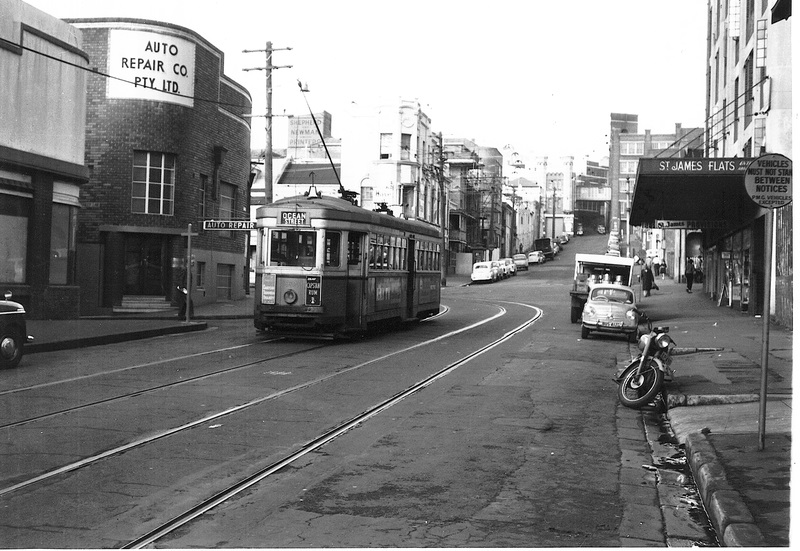Local history fast facts - T
A B C D E F G H I J K L M N O P Q R S T U V W X Y Z
TARA STREET, Woollahra - named after the house Tara, later known as Rancliffe in Ocean Street, Woollahra.
TERRACE HOUSE - Found in groups of three or more adjoining houses of the 'two up and two down' room configuration, joined by a common party (fire) wall mostly but not always projecting through the roof, the dominating feature being the cast iron verandah panels (iron lace - Victorian Filigree style). The pattern is most prominent in Paddington with some in Woollahra, Double Bay, Bondi Junction and Watsons Bay.
THORNTON STREET, Darling Point - named after the Hon. George Thornton, first Chairman (Mayor) of Woollahra Council in 1860.
TINGIRA RESERVE, Rose Bay. - The reserve was created in two bits - in 1962 and in 1977, as a monument to HMAS Tingira, a naval training ship moored on a swinging anchor in Rose Bay from 1912 to 1927 - often incorrectly pronounced 'Tingara'. The ship started life as a clipper, the Sobraon, built in 1866 in Aberdeen, Scotland and was the largest composite ship ever built. After 25 years on the England - Australia run she was pressed into service as a 'Nautical School' for naughty boys and, berthed off Cockatoo Island, serving in this capacity for nearly 20 years. She was purchased by the Commonwealth Government in 1911, refitted to accommodate 200 trainees, repainted white with yellow masts and renamed HMAS Tingira- an Aboriginal word purporting to mean 'open sea'. After decommissioning, she was placed in Berrys Bay, serving as a coal hulk, stores ship and for a time a hostel for destitute men. She was scuttled at sea in 1941. The Memorial in Tingira Reserve commemorates the ship and some 100 of the boys who trained in her.
For more information please see the Woollahra Libraries Digital Archive.
TIVOLI - New South Head Road, Rose Bay. A stone cottage was built on part of the 'Breakwell grant' around 1842 by Captain William Dumaresq, brother-in-law to Governor Darling. The Dumaresq family lived there until 1881 when it was sold to Morrice Alexander Black. John Horbury Hunt was commissioned to rebuild the house which, although considerably altered, is still in use and forms pad of the Kambala Girl's School. The naming of the site Tivoli is obscure and may go back to the time of Breakwell.
TIVOLI, VILLAGE OF - A planned sub division in 1836 in Watsons Bay - see Boto Fogo.
TOOGOOD LANE, Watsons Bay - now known as Clovelly Street. Alfred R. Toogood was an early resident of the area.
TOWNS ROAD, Vaucluse - named in 1909 after the Honorable Robert Towns (1794-1873), an early resident of Woollahra.
TRAANSVAAL AVENUE, Double Bay - named by Edward Knox Harkness, who developed property in the street, June 1900 in honour of New South Wales troops fighting in the Boer War. (see WMC Minutes, Ordinary Meeting, 11.06.1900, p. 443).
TRAHLEE, Cnr Kambala and Ginahgulla Roads, contains the gates originally placed near the Lodge entrance to Woollahra House on present day Wunulla Road. See also: Sir Mark Sheldon and the Trahlee Subdivision.
For more information please see the Woollahra Libraries Digital Archive and the supplementary research file.
TRAHLEE ROAD, NO. 5. - Two storey house built in 1936 for Mr G. Beresford Grant and designed by Leslie Wilkinson.
TRAMS, THE ERA OF THE. - In Woollahra there were four separate systems: New South Head Road system - started in 1894 with a cable tram running from the city to Ocean Street with the cable driving engine located at Rushcutters Bay. In 1898 an electric system was built from Ocean Street to Rose Bay (Pier) extended to Dover Road in 1900, to the Signal Station in 1903 and down to Watsons Bay in 1909 o this was closed in 1960; Oxford Street system - open to Darlinghurst in 1880, to Ocean St in 1881 and to Waverley later in 1881 with a branch line to Bondi (Denham Street) in 1884 - it was closed in 1960; Woollahra system - was a steam tram with double deck coaches branching off the Oxford Street line on single track and running down Queen Street, turning into Ocean Street terminating in front of All Saints' Church. This closed in 1895; Bellevue system - ran through Paddington terminating at Bellevue Park in 1909 and extended down to Bondi in 1914. The part from Ocean Street to Bondi closed in 1954 with the Paddington section closing in 1959.

Tram in Yurong Street, Darlinghurst, c1959. Woollahra Libraries Digital Archive, Robin Brampton, pf008428.
TREFLE, MOUNT - Nielsen Park. Sandstone Residual in eastern end of Nielsen Park, named after The Hon. J.L. Trefle, N.S.W. Secretary for Lands (1912-1915).
TREVENNA & ROSKEAR (Lorne & Lindisfarne) - Nos. 71 & 69 Darling Point Road, Darling Point. Two Victorian Italianate semi-detached groups in the 'grand' style.
TRUMPER PARK - Edgecliff - Originally Hampden Park Oval, it was built on reclaimed swamp - Glenmore Brook runs down and under its middle. It was named in honour of Viscount Hampden, Governor of New South Wales (1895-99) - Hampden Street alongside the park was originally named Ebenezer Street. The name of park was changed in 1931 to honour one of Paddington's cricketing heroes, Victor Trumper (1877-1915).
For more information please see the Woollahra Libraries Digital Archive and the supplementary research file.
TUEILA - Demolished house, 73 Bay Street, Double Bay but fronting onto the promenade. The house, built in 1853, extended in 1910 and remodelled in 1978 was the home, for three generations, of the Ashton family prominent in political life and for its top class polo players - demolished in November, 1991.
For more information please see the Woollahra Libraries Digital Archive.